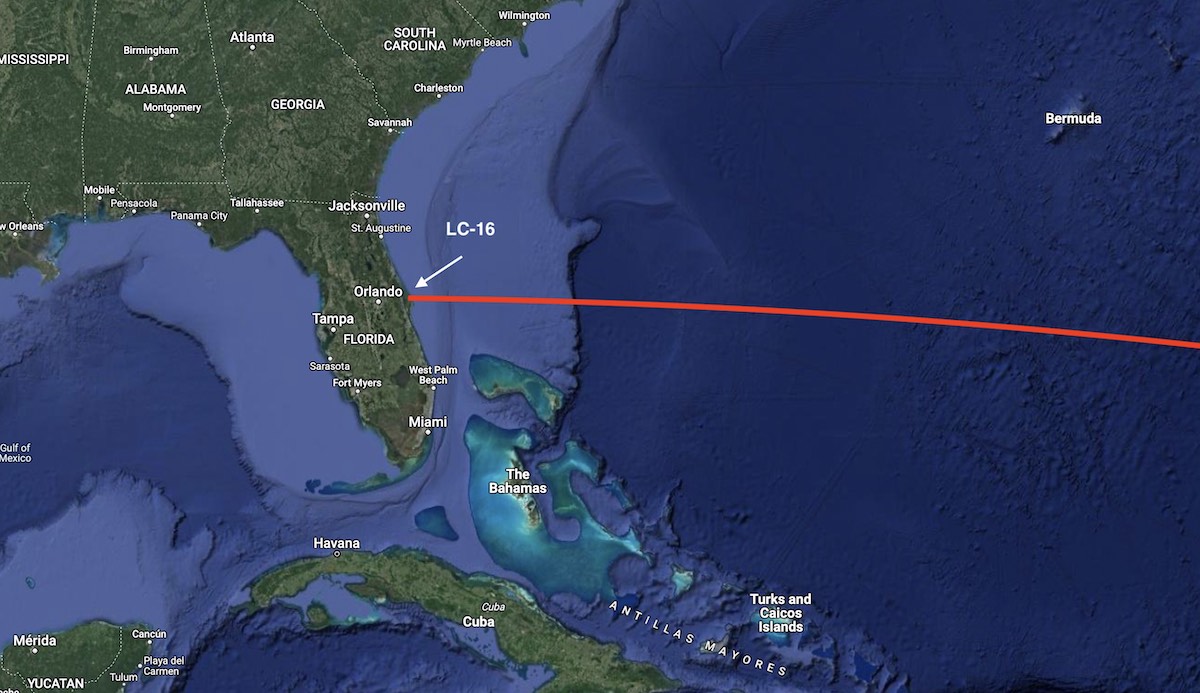
Forecasters from the U.S. Space Force predict mostly sunny conditions at Cape Canaveral during a three-hour launch window Wednesday afternoon for the first flight of Relativity Space’s Terran 1 rocket.
The three-hour launch window opens at 1 p.m. EST (1800 GMT) Wednesday. Relativity’s Terran 1 rocket, primarily made of 3D printed parts, will take off from Launch Complex 16 at Cape Canaveral Space Force Station and attempt to reach a low-altitude orbit at an altitude of more than 120 miles (200 kilometers), the company said.
There’s a 90% chance of favorable weather for Wednesday’s launch window, according to the Space Force’s 45th Weather Squadron. Forecasters expect scattered cumulus clouds and gusty winds up to 22 mph out of the northeast, but the winds will likely remain below limits for liftoff of the 110-foot-tall (33.5-meter) Terran 1 rocket. The weather team predicts a temperature around 76 degrees Fahrenheit during the launch window.
The Terran 1 rocket’s first test flight is a major moment for Relativity, a company founded in 2015 by Tim Ellis and Jordan Noone, college classmates who worked short stints as engineers with Blue Origin and SpaceX. Ellis, 32, is CEO of Relativity, while the 3o-year-old Noone stepped down as the company’s chief technology officer in 2020 to help establish a venture capital firm called Embedded Ventures.
Staffed with veteran engineers from SpaceX and other launch companies, Relativity has lofty ambitions to develop a fully reusable 3D-printed rocket called the Terran R, a vehicle the company says will become a “point-to-point space freighter capable of missions between the Earth, moon and Mars.”
Headquartered in Long Beach, California, Relativity has raised $1.3 billion from venture capital and equity firms, including an early investment from billionaire Mark Cuban. In 2021, the company reached a valuation of $4.2 billion before launching any rockets.
Now the Terran 1 is on the launch pad in Florida, ready for an inaugural test flight to demonstrate the rocket’s 3D-printed tanks, structures, and engine components can withstand the rigors of launch.

About 85% of the 20,458-pound (9,280-kilogram) structural mass of the Terran 1 rocket is manufactured with 3D printing technology, including its Aeon engines, fed by methane fuel and super-cold liquid oxygen. 3D printing allows Relativity to manufacture rockets with 100 times fewer parts than launch vehicles built using conventional methods, the company says.
“We are on the launch pad almost ready to go with the world’s first 3D printed rocket,” Ellis tweeted last month. “It’s been a truly wild ride to get to this point, and certainly way harder than I ever imagined going into it — but all the feels from me and our team as we embark on this historic launch. There is a very bright future ahead for Relativity Space!”
The nine Aeon 1 engines on the first stage of the Terran 1 rocket will generate about 207,000 pounds of thrust at full power. The second stage of the Terran 1 rocket is powered by a single “Aeon Vac” engine optimized for firings in space.
The expendable Terran 1 rocket can carry up to 2,755 pounds, or 1,250 kilograms, of cargo to a low-altitude orbit. That’s significantly more than other commercial small satellite launchers, such as Rocket Lab’s Electron vehicle. Relativity says it sells a dedicated launch on a Terran 1 rocket for $12 million.
The first Terran 1 test flight will not carry a customer payload. It’s purely a test flight, which Relativity has nicknamed “Good Luck, Have Fun.” The nose cone of the Terran 1 rocket for the first test flight will not separate after liftoff, as it will on future missions with customer payloads.
Inside the nose cone of the rocket is a structure that was one of the first items produced by Relativity’s 3D printers. The demo payload will remain attached to the rocket’s upper stage after it reaches orbit.
Email the author.
Follow Stephen Clark on Twitter: @StephenClark1.
from Spaceflight Now https://ift.tt/NasnxSk
via World Space Info







0 comments:
Post a Comment